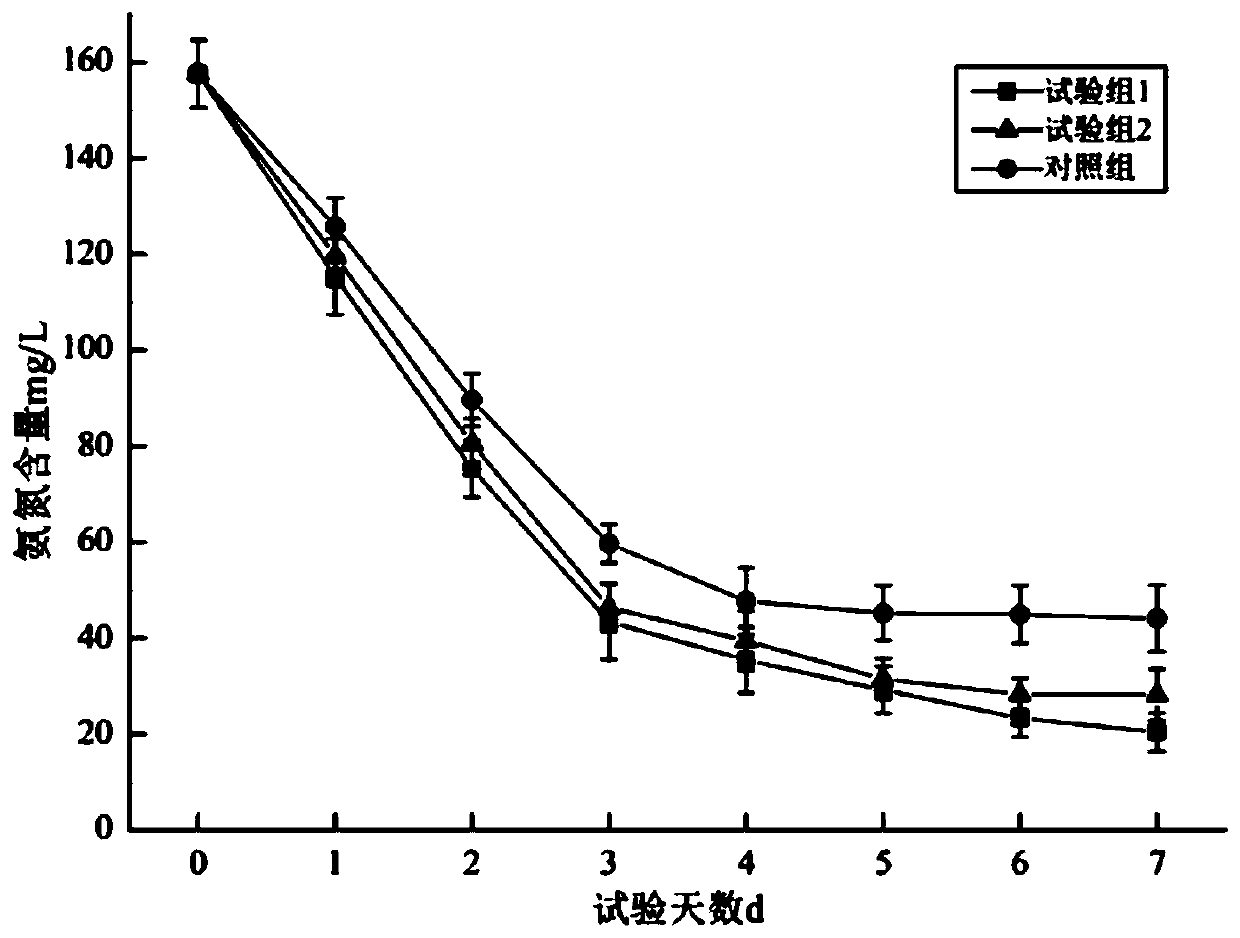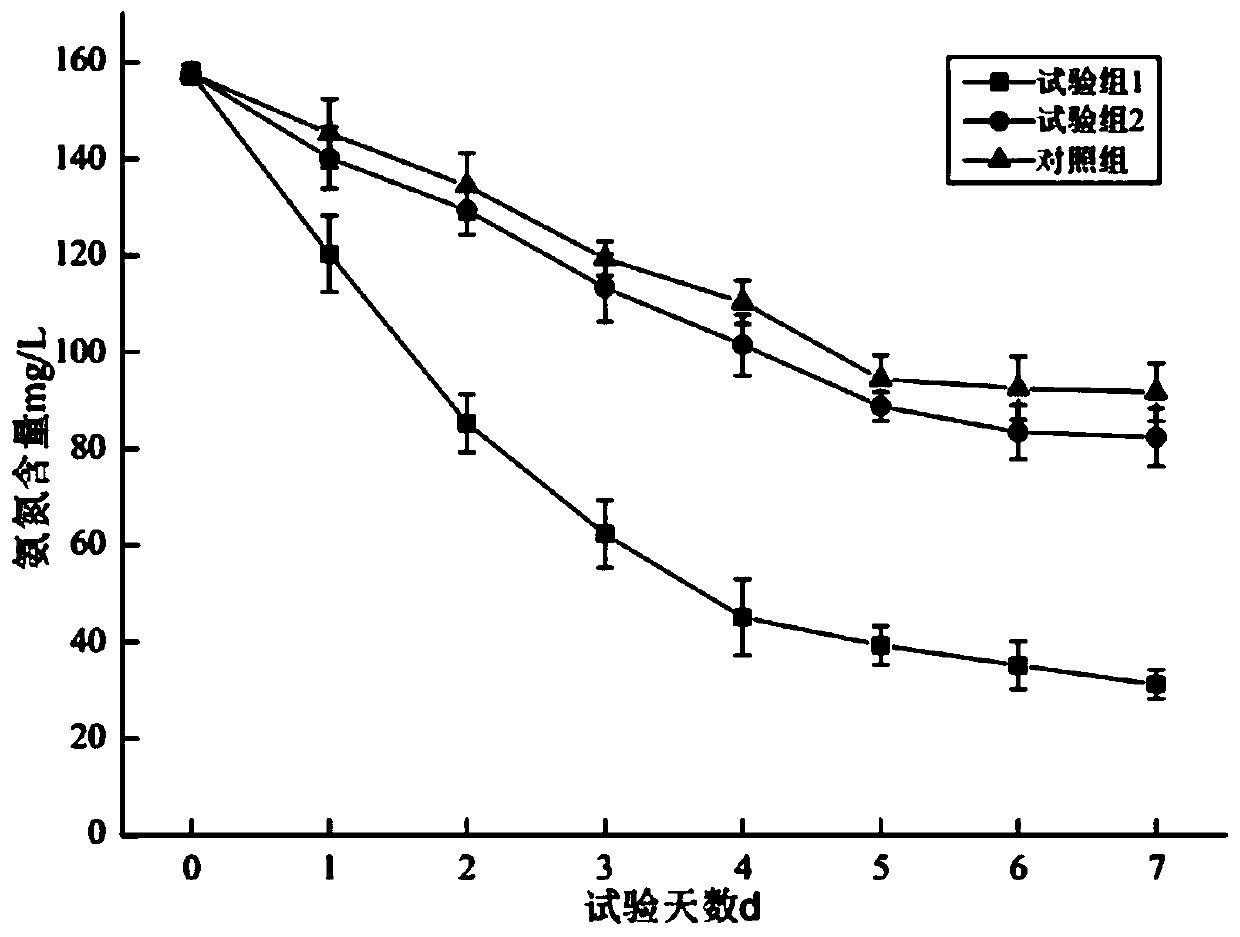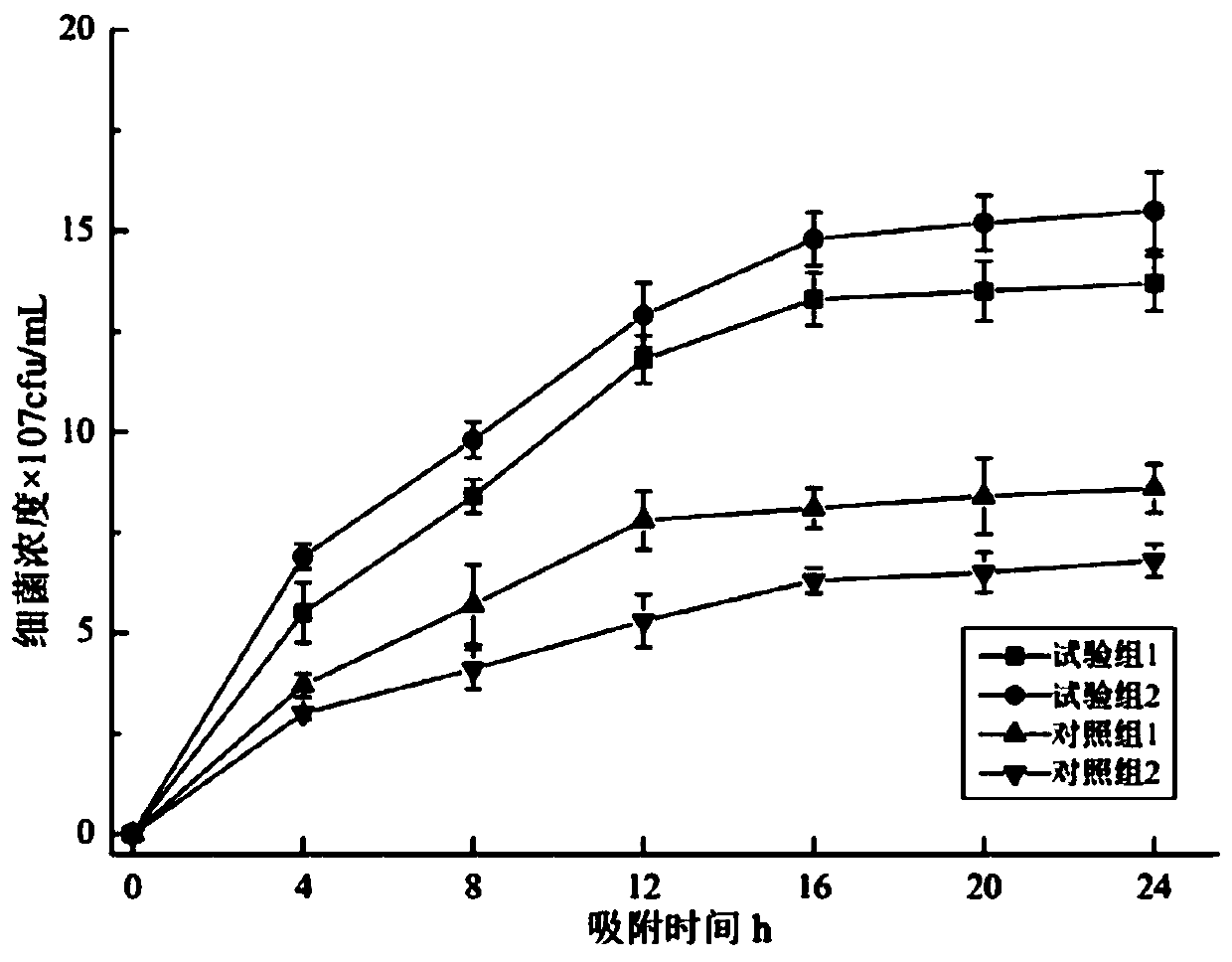Method for treating aquaculture sewage based on microbial degradation
A technology for microbial degradation and aquaculture sewage, applied in the field of aquaculture sewage treatment based on microbial degradation, can solve the problems of low load, poor impact resistance, and high energy consumption, and achieve energy saving and energy consumption, good adsorption performance, and good precipitation. Effect
- Summary
- Abstract
- Description
- Claims
- Application Information
AI Technical Summary
Problems solved by technology
Method used
Image
Examples
Embodiment 1
[0034] A method for treating aquaculture sewage based on microbial degradation, including: providing filter packing loaded with algae, the above-mentioned packing performs preliminary adsorption and filtration of the above-mentioned sewage; providing fixed algae pellets, and the above-mentioned pellets carry out symbiosis on the sewage treated by the above-mentioned packing Purification: the above-mentioned algal bacteria are placed in a nitrogen-free and phosphorus-free culture environment for expanded cultivation, and nitrogen and phosphorus are acclimatized before loading or fixing. When the above-mentioned acclimatization operation is terminated, the weight percentage of ammonia nitrogen in the culture environment is at least 25%, and the weight of phosphorus is at least 25%. The percentage is at least 20%. This treatment method can remove COD, nitrogen, phosphorus organic matter, metal ions, etc. in sewage, increase the amount of dissolved oxygen in sewage, and has high tr...
Embodiment 2
[0049] The method for treating aquaculture sewage based on microbial degradation, its specific steps are as follows:
[0050] (1) Take Chlorella pyrenoidosa to be activated and cultivated in SE medium for 3 days, take yeast, lactic acid bacteria, denitrifying bacteria, nitrifying bacteria and photosynthetic bacteria to activate and cultivate in LB medium for 24 hours, and recover algae species and Bacteria, the algae and bacteria were inoculated in the nitrogen-free medium according to the weight ratio of 2:1, and the algae were cultured for 15 days under the conditions of light-dark ratio 12h:12h, light intensity 4000Lx, and temperature 25°C. Cultivate for 72 hours at a light-to-dark ratio of 12h:12h, a light intensity of 5000Lx, and a temperature of 28°C to complete the expanded cultivation of algal bacteria in a nitrogen- and phosphorus-free environment;
[0051] (2) Add NaNO to the nitrogen- and phosphorus-free medium 2 and K 2 HPO 4 , adding at a concentration gradient...
Embodiment 3
[0059] The only difference between this example and Example 2 is that the glucomannan solution prepared in step (3) contains 0.05mM thiodipropionic acid and 0.1mM 3-bis(hydroxymethyl)urea , glucomannan plays a linking role in fly ash and plant straw, making the two tightly combined, thiodipropionic acid and 3-bis(hydroxymethyl)urea can produce hydroxyl and aldehyde groups of glucomannan The role of glucomannan changes the chain structure of glucomannan, which can inhibit the formation of microgel when forming a gel, and make the grid space larger by means of steric hindrance, and the slack space can embed more microbial cells and increase the density of fillers. On the other hand, the two and glucomannan are evenly distributed in the filler, and hydrogen bonds with the metal bonds in the fly ash, so that the surface activity of the filler is activated, and the surface energy increases, allowing sewage to flow through the filler It can form a thin film on the surface of the fil...
PUM
| Property | Measurement | Unit |
|---|---|---|
| thickness | aaaaa | aaaaa |
| particle size | aaaaa | aaaaa |
Abstract
Description
Claims
Application Information
 Login to View More
Login to View More - R&D
- Intellectual Property
- Life Sciences
- Materials
- Tech Scout
- Unparalleled Data Quality
- Higher Quality Content
- 60% Fewer Hallucinations
Browse by: Latest US Patents, China's latest patents, Technical Efficacy Thesaurus, Application Domain, Technology Topic, Popular Technical Reports.
© 2025 PatSnap. All rights reserved.Legal|Privacy policy|Modern Slavery Act Transparency Statement|Sitemap|About US| Contact US: help@patsnap.com



